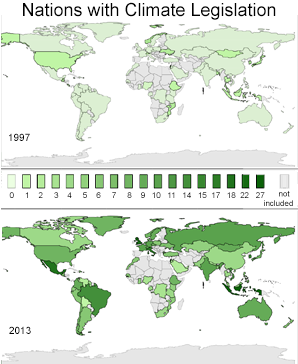I start today by reiterating my long standing prediction that by 2030 all new cars (and increasingly it looks like light duty trucks and maybe even some heavy duty ones too) sold in the U.S. will be fully electric or drive 95% of the time on electricity. Back in 2014 when I first made a bet on this it was pretty bold. But since then, the circumstances are moving more and more and faster and faster in this direction!
There are some interesting and encouraging developments and information regarding the transformation of the U.S. automobile fleet from ICEs (internal combustion engines) to fully electric ones. You may not be aware that Ford is now selling a fully electric Mustang. It’s actually a crossover not a sports car like the original. This one is much faster though! I’ve seen a few on the roads around here and to me, it’s a great looking car. (Hard for me, a Chevy guy, to say this.) When it comes to predicting the future of EVs, many “experts” say that the demand just isn’t there.
Well…
Ford Shatters EV Sales Record with Electric Mustang
Arianna Skibell, E&E Reporter
June 4, 2021
“”It’s selling as soon as it hits the dealer, and we’re doing everything we can to keep up with the demand.””
Additionally, the auto manufacturer announced a “massive number” of reservations for its new, all-electric F-150 Lightning truck. Ford Vice President of Sales Andrew Frick said in a statement that reservations have topped 70,000 pickups.”
I saw a chart recently, which I now cannot find, that showed historically, how long it has taken to sell one million electric cars. It showed the time period going down exponentially and now stands at 18 months. Sale are picking up rapidly.
From The Guardian:
Electric Cars ‘Will be Cheaper to Produce than Fossil Fuel Vehicles by 2027’
May 12, 2021
https://www.theguardian.com/business/2021/may/09/electric-cars-will-be-cheaper-to-produce-than-fossil-fuel-vehicles-by-2027?mc_cid=7a27f44ef9&mc_eid=8f4760cc57
“The falling cost of producing batteries for electric vehicles, combined with dedicated production lines in carmarkers’ plants, will make them cheaper to buy, on average, within the next six years than conventional cars, even before any government subsidies, BloombergNEF found.
The report’s timeline for cost parity is more conservative than other forecasts, including one from the investment bank UBS, which has predicted that electric cars will cost the same to make by 2024.
However, forecasters are in agreement that the cost of new batteries will continue to fall in the coming years.”
Now add this prospect to the cost and timeline equation and things could continue to change even more rapidly:
Bloomberg Hyperdrive
June 4, 2021
https://www.theguardian.com/business/2021/may/09/electric-cars-will-be-cheaper-to-produce-than-fossil-fuel-vehicles-by-2027?mc_cid=7a27f44ef9&mc_eid=8f4760cc57
“Automakers and battery suppliers are in an R&D race to come up with the next low-cost battery. The one move that is increasingly seen as the quickest way to reduce battery costs is by reducing — or replacing — the cobalt content in a battery. The alternative to that might be manganese.”
From the way I read the article, Magnesium costs a small fraction of what cobalt costs and a huge part of the cost of a battery is the cost of cobalt. Thus, if this technology proves out the cost of an EV will plummet. The article is kinda wonky so if you click over to read it and I’m wrong let me know.
One last interesting auto related article before the headlines is about a test site that VW is developing. From Bloomberg Hyperdrive:
“The German manufacturer has chosen scenic Astypalea — an islet roughly the size of the Bronx and home to some 1,300 people — for a major clean-mobility makeover.
VW aims to substitute all of the island’s roughly 1,500 combustion-engine vehicles with its electric cars, vans and scooters. Wind turbines, solar panels and batteries are going to replace Astypalea’s diesel generators, and VW will install charging stations and set up a car-sharing offering. On Wednesday, CEO Herbert Diess handed over the first EV — an ID.4 crossover — to local police.
“Astypalea will be a future lab for decarbonization in Europe,” Diess said.
From encouraging news to the bleak. More and more reports of extreme weather. And this is just the beginning. Remember, one day we’ll look back at these events and not think of them as the worst and realize it is the best it will be going forward.
A Million Years of Data Confirms: Monsoons Are Likely to Get Worse
The annual summer monsoon in South Asia begins this month. A new study points to more destructive storms.
The New York Times June 4, 2021
Bloomberg Open
June 4, 2021
The worst drought in decades is escalating threats across the western U.S. and farmers, cities and power suppliers are scrambling for water. Unlike in the East, the West gets most of its water in winter months from rain or snow. Last year, drought cost the nation $4.5 billion. This year, what little snow that fell soon disappeared.
-
What’s happening: Almost three-quarters of the West is gripped by drought so severe it’s off the charts of anything recorded in the 20-year history of the U.S. Drought Monitor. The region saw little precipitation, robbing reservoirs of dearly needed snowmelt and rain. Through the end of April, 1.7 million acre-feet of water melted off California’s mountains, down from the normal rate of 8 million.
-
What it means: The parched conditions mean the wildfire threat is high and farmers are struggling to irrigate crops. With not a lot to go around this year, regional water issues are likely to mount, with little hope for relief.”

Record daily temperatures bake drought-stricken West
Thursday, June 3, 2021



